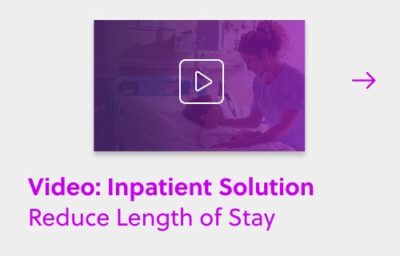As we discussed in Managing your ED through the Flu – Part 1, a critical part of preparing for a surge of patients is efficiently handling and dispositioning the volume you have in the ED before that surge arrives y. As part of this preparation, you can use predictive software to understand when the surge is coming and notify your staff of specific actions they can take to prepare themselves (if you’re curious, let us tell you more).
But even an ED manager or charge nurse who is able to prepare the staff for a busy day is only winning half of the battle. That manager might have done everything right — called in extra staff, held a physician a few hours past the usual end of her shift, made sure some low acuity patients got dispositioned right away — but still got caught with a department of occupied beds and patients waiting outside. Why?
Boarding
At analyticsMD, we see data from a range of EDs that show a common but unfortunate root cause of backups — slow admissions to the floor that compel the ED to board patients who are awaiting beds upstairs. If your ED frequently admits patients to the wards, it’s likely that you’ve had your beds occupied at times for 6, 8 or even 12 hours by patients who belonged in an inpatient unit.
Holding admitted patients in the ED – or boarding, as we’ll refer to this phenomenon – is a horrible situation. First, it’s bad for the patient. He or she has been waiting for a long time, for reasons that are not immediately apparent to him or her. Furthermore, the admitting physician is not in an advantaged position to start her orders since the patient isn’t yet under her direct care. The ED staff is more than likely consumed by workups for other patients coming in, so they may not be able to attend to the patient as much as the patient might need.
And, of course, boarding has consequences for patient flow. The bed occupied by the boarding patient is going to be tied up for hours. If the patient came in at the beginning of the afternoon surge, then that’s one less bed you have to work with when you really need it. To put it in starker terms: that boarding bed is a bed in which 3 or 4 low-acuity patients could have been treated and released .
Your friends upstairs
Meanwhile, upstairs in the admitting unit, business might be continuing as usual. The charge nurse on that unit doesn’t have visibility into how full the ED waiting room is, or if it isn’t full yet, how full it is going to be in 3 hours. The charge nurse’s first sign that things are about to get busy might be when he gets a call from the house supervisor asking for a bed.
The charge nurse onthe admitting unit doesn’t have a lot of time to come up with a bed. If his first sign of trouble was the call from the house supervisor, that means that the patient may already be boarding in the ED and the backup has already begun.
In the hours that follow, the admitting unit scrambles to find a patient who is ready to be discharged and works hard to get that patient on the way home. That means a call to the attending physician to get the order, a call to the patient’s family to arrange pickup, a call to the local DME provider to make sure the patient has any equipment he or she needs, and an RN or two working diligently to get the patient fully prepped for discharge. This is a stressful situation for a clinical team that is already under pressure.
Visibility and anticipation
Fundamentally, these problems are rooted in two phenomena. The first is a lack of visibility — that of the admitting unit’s visibility into pending demand in the ED, and the ED’s visibility into capacity upstairs. The second is a failure to anticipate a situation that is as common as it is challenging.
Now, let’s replay this example with the benefit of a diligent coordinator, or alternatively, a piece of software that is looking hours ahead to anticipate and avoid such a bottleneck. We’ll call this entity the ‘operator’.
That operator could constantly monitor census in each of the common admitting units. In addition, the operator could use a variety of forecasting techniques to generate likely scenarios for that day’s ED volume — both in aggregate and for high-acuity patients. By overlaying these probability-weighted scenarios on top of one another, and by considering the facility’s relative preferences to take action early versus allow the situation to develop more fully before acting, that operator could make risk-balanced recommendations to proactively position the hospital wherever it would like to be–including getting out of the trap of boarding. .
These recommendations might include kick-starting the discharge process for patients in the admitting unit, or perhaps transferring a patient to a different level of care. The operator’s recommendation might even be as simple as notifying the on-call physicians in those units to be ready to execute discharge orders quickly if requested. The operator might choose to recommend a different action altogether, based on the hospital’s specific preferences for handling such situations.
So, should a hospital pay someone to be this operator? No. In reality, the role of the operator is best suited for software. Software can make forecasts, generate scenarios, and properly weigh benefits and costs any time of day, constantly, 24/7, and without errors or individual-specific tendencies. This is why, at analyticsMD, we often refer to our software as an Operating System — it is the systemic embodiment of the operator described above.
Regardless of whether you choose to address the issue of boarding and ED backups through software or other means, don’t forget that your friends upstairs have a hand in your ED’s performance. And don’t forget that they don’t get to see the same waiting room you do.


